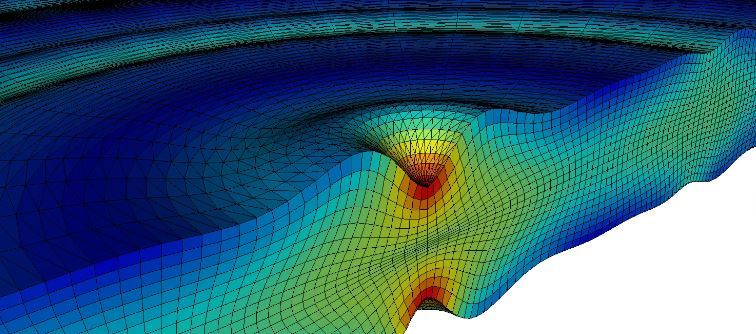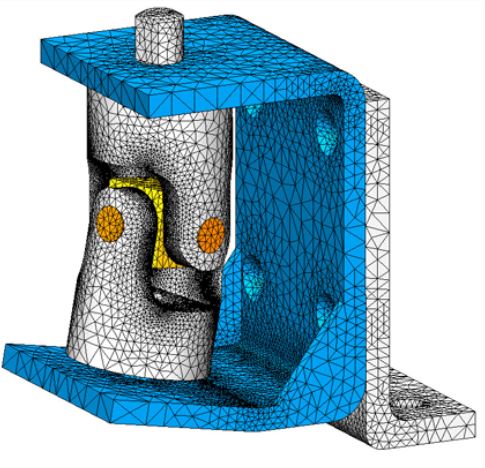-
Fundamentals of Modal Analysis
Modal analysis is the study of dynamic properties of linear structures such as resonance frequencies and structural modes of structure. It also determines the dynamic responses of the system in response to externally excited disturbances. These disturbances can be operational loads on the system from the working environment or else it can be undesirable excitations…
-
Underlying concepts of 3D elements.
Three-dimensional meshing is always a tedious task for engineers. Three-dimensional meshing is always performed for the components where all three dimensions are comparable to each other. Body in white (BIW) and plastic components have meshed with shell elements whose third dimension is always negligible which is mainly the thickness. So, we generally mesh the 2D…
-
Contact Detection Methods
After understanding the types of formulations used for contacts in Ansys Mechanical, let us have a deeper insight into the detection of contacts. The contacts are detected using different methods. The two major types are by using integration points and nodal points. Both the methods have their own advantages and disadvantages. So, as an optimal…
-
Contacts – Types and Formulations in Ansys Mechanical
What do we say for a “contact” in general? We define two bodies to be in contact, when their surfaces touch each other. But the condition is not so easy in the world of simulation. There must be necessary conditions to be satisfied and formulations to be constructed to define a contact’s status. We shall have…
-
Iteration techniques for Non Linear Analysis
Iteration techniques for Non Linear analysis. Static structural analysis, in one way, can be classified into linear and non linear analysis. When response of the structure like displacement, stress and strain, varies linearly in proportional to the magnitude of applied load, then it can be categorized as linear static analysis. And when the structure responses…
-
Bolted joints
Bolted joints are used to connect parts which combine to form a mechanical structure. In comparison to other joining methods such as welded joints and riveted joints, bolted joints have been widely used due to their ease of assembly and disassembly, load bearing capacity and low cost. Bolted joints also serve easy part replacement, maintenance,…
-

Fundamentals of Modal Analysis
-

Underlying concepts of 3D elements.
-

Contact Detection Methods
-

Contacts – Types and Formulations in Ansys Mechanical
